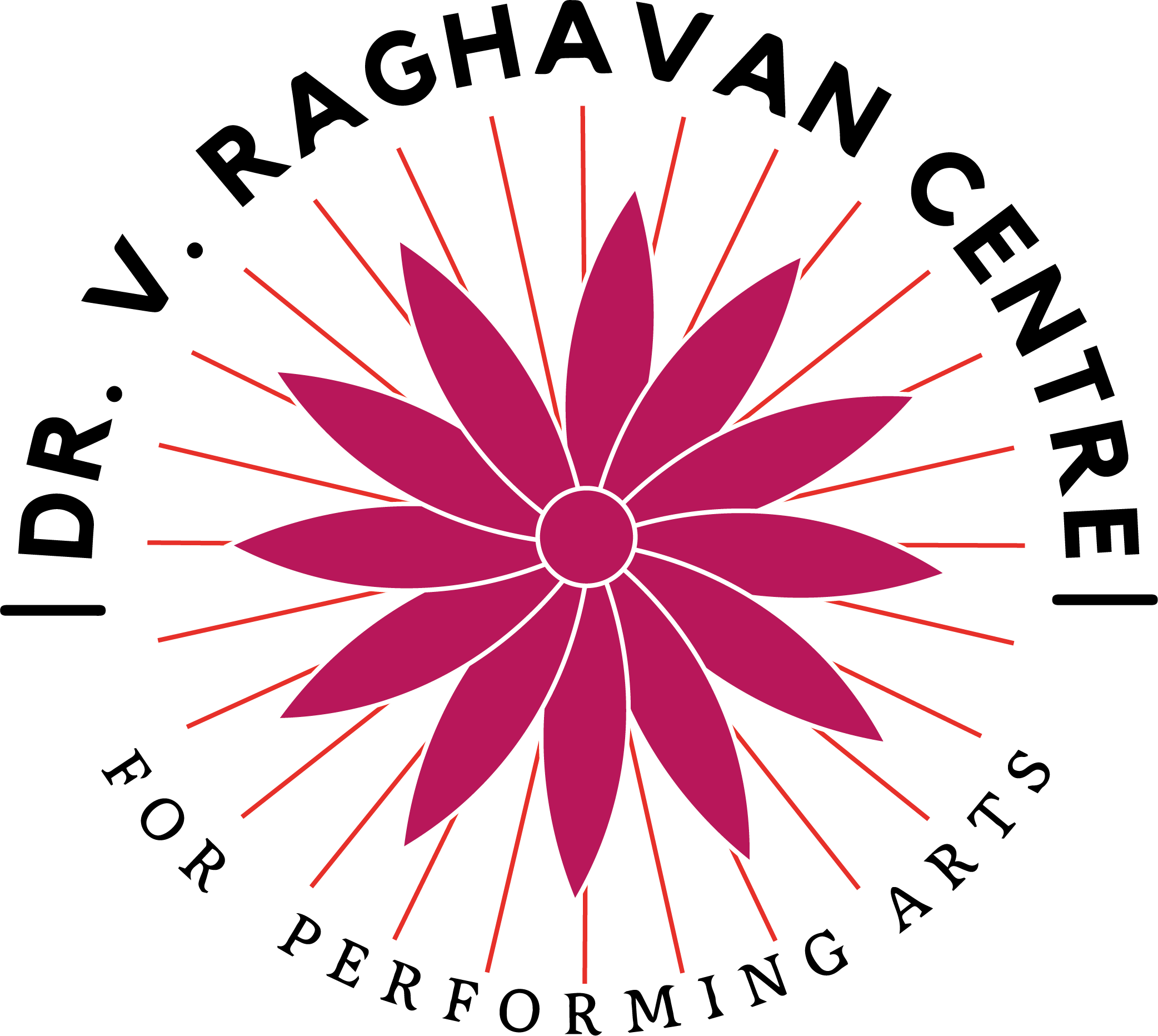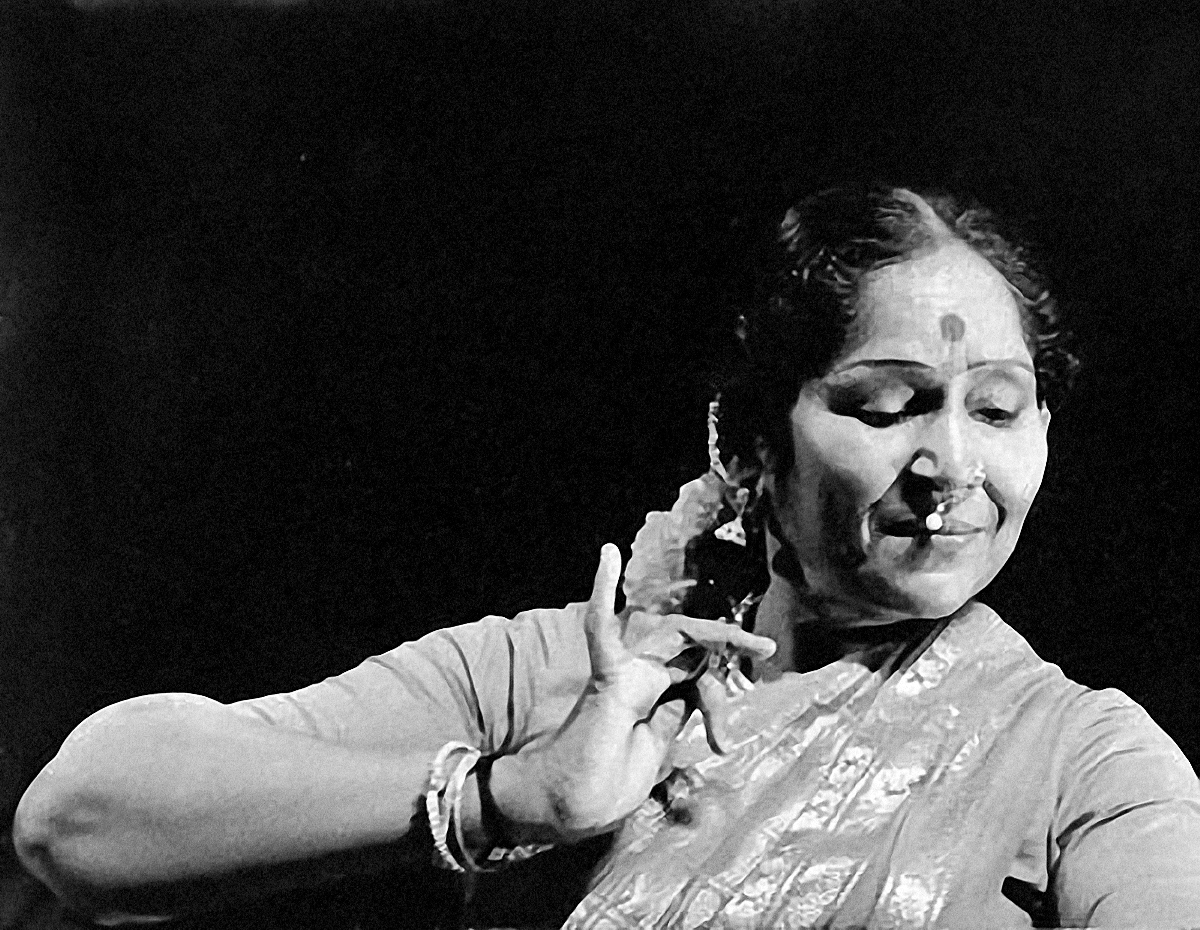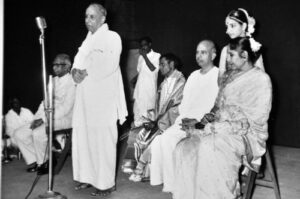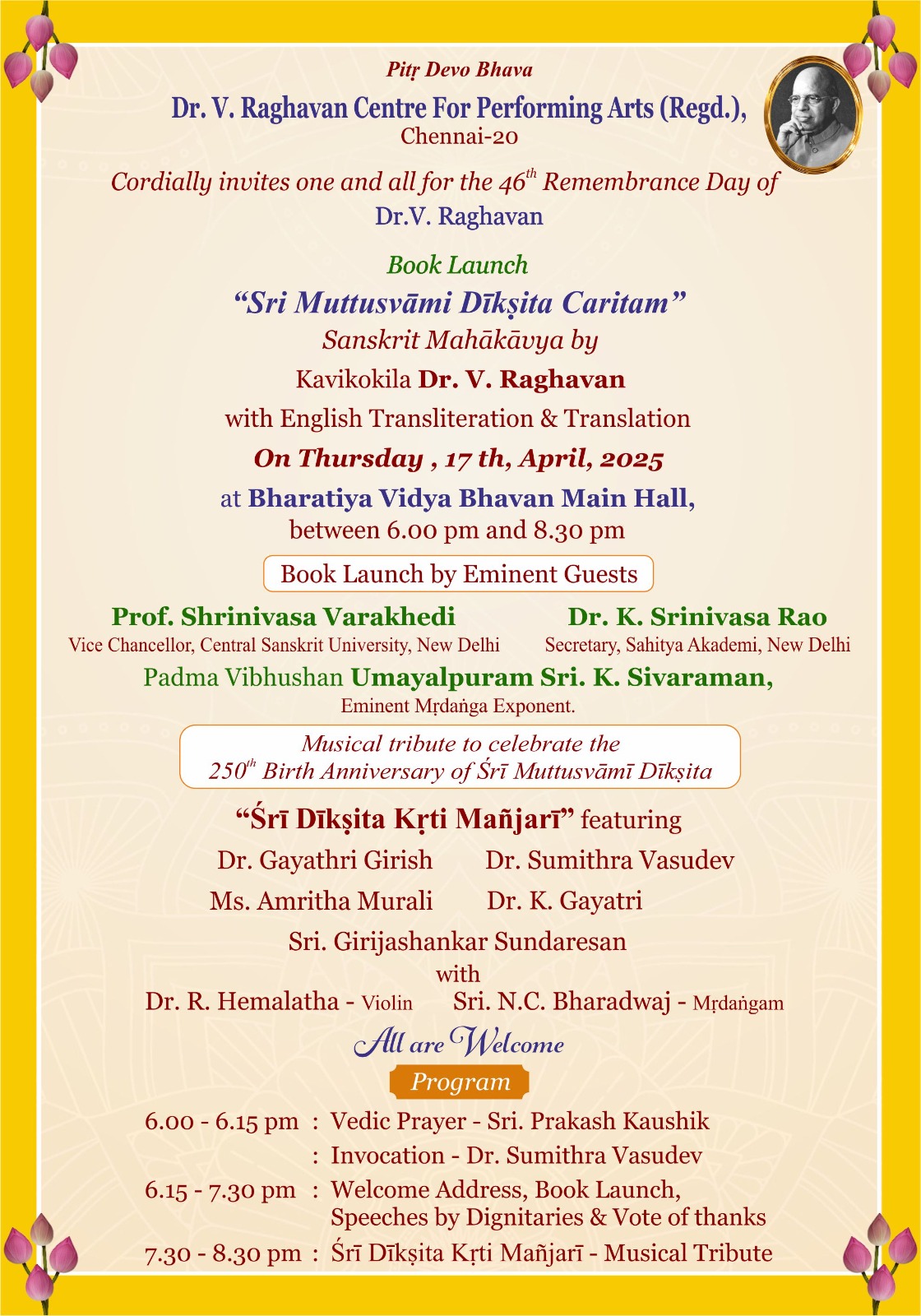In the Kandappa – Bala technique, all the technical sections from the basic steps to the items of repertoire were always taught by my revered dance-master K. Ganesan, the only son of the illustrious Kandappa, teacher of Bala. Bala was present most of the time during rigorous sessions of Nritta and kept a watchful eye on the student.
Once the student has perfect Nritta co-ordination, mastering all the technical repertoire,Bala would first begin with Sabdam, and proceed in a leisurely manner to the other items – the lyrical part of the Varnam, the Padams & Javali. The tempo of the song, has to be followed firmly by just walking along the song with Bala keeping up the beats; then later the hands will be set for each Padam. Initially I was shaped under her protective wings; As I grew, my mind expanded and started to absorb the deeper details of Bala’s approach.
Bala used to tackle the classes with ease and in a simple approach without any big expectation with the student.
Nritta in Bala’s style was very rigorous in the real sense; the training of Basic steps with only the foot work went on for at least 2 years; after the thorough feet, hands were added gradually; by the time the student is ready for the Alarippu, atleast 3-4 years of basic training would have been completed. The Margam, as it is now addressed (Bala always said Cutcheri & the term Margam was not used in our class) is of prime importance in this tradition. A very important aspect of Bala’s technique is its equal emphasis on both Nritta (pure dance) and Abhinaya (interpretative dance).
Bala had a definite mode of teaching the young student, starting with very simple straight hands that brought the direct meaning of the lyric; further there would be couple of more hands to elaborate and these would have to be practiced as per her direction without any input from the student at that point of time; Bala allowed the student to mature all by herself; hence for me, the process started with an inward journey as I grew older; that way I could envisage the Manodharma of her abhinaya technique to a certain extent; Bala expected us the sisters, since we were trained in Vocal Music, to apply our minds towards a deeper approach and widen our variety in abhinaya, while our master Ganesan was keen on the points of perfection of the rigorous, rhythmical nuances and the limb movements. Since I was fortunate to have both the aspects under one roof, I feel it made, as Kandappa insisted, the body-orientation and interpretative expansion to blend well, each one continuing in an unbroken chain of action, having been moulded in a Single Sampradaya.
Well-maintained Sthayi-bhava (the permanent mood), hand-gestures moving in an unhurried manner blending with the Music gently, and hand delineations having an innate beauty are some of the striking features of Bala’s depiction; subtlety, and suggestion (Dhvani), smooth portrayal of role-reversal, elevating thoughts in interpretation, a certain spontaneity in linking the different hands to offer a wholesome visual picture, lead to further beauty in gesticulation. No hand is fixed and the abhinaya portions are never rehearsed prior to the performance. The rehearsal is only for the Jati (technical) choreography, that too, just a day before the recital, for the sake of the Mridangam accompanist.
Similarly the adavus set for any swara segment exhibited a clinging quality and maintained a perfet alignment with the musicality of the rhythmical portion, be it a Jatiswaram or a technical part of the Varnam or a Tillana. Demo-Excerpt: Muktayi of Mohamana:
Nee-Sa-ri-sa.
She never compromised the format at any point of her performing career, and tried to keep up the Margam pattern till her last. loyalty to one’s own tradition, utmost patience, hardwork, and above all intense Guru bhakti were core values that Bala propagated in her life.
Her art was aimed towards the higher goals of life; she never ever treated the art with a light-hearted, entertaining approach or focus; for her, art was to reach the Ultimate; and that’s the reason her art attained such immortal status.
Art and life were inseparable for Bala
Bala was unique in my ways, as a person and as an artist. She was endowed with a rare blend of in-built spirituality and creative genius, both of which she combined with utmost Aucityam or propriety and extended a unique touch to her art. For her, life and art were not separate entities. She breathed Music and Dance and meditated on them all through her life. She never danced to satisfy the audience and was uncompromising.
As a firm adherent to tradition, Bala always said that she never dared to do anything in her dance that would displease her mentor, the stern teacher Kandappa Pillai. In fact, while teaching, if she had to dwell on any rhythmical section, she would say, “I shall not touch the Thattukazhi for it has to be handled only by master”. She always indicated the beats by the clapping of the hands or keeping time on the lap. Such was her reverence and utter devotion to her master. Kandappa was a genius in choreography, who at the advice of Jayammal, Bala’s mother, paved for the young Bala, a path of hard work and absolute devotion to her technique.
In a review in the magazine, Sound & Shadow, of her performance at this city as early as 1938, Dr. V. Raghavan, under a pseudonym, “Bhavuka”, wrote: “Young Bala’s Nritta was outstanding, while her abhinaya required further training……” Such was the unique quality of Nritta in this tradition, underlined with an impeccable footwork, and exquisite execution of the fire-like Jatis of Kandappa; These were the hallmarks of Bala’s technical prowess, as recollected by Bala herself during her classroom sessions with her students at the Madras Music Academy. Hence, to address her as the Queen of Abhinaya alone is not fully justified, for, the technical excellence of Kandappa’s rigorous technique formed the strong base for her and Bala explored it extensively in her abhinaya manifestation.
Bala’s abhinaya technique was highly aesthetic that rose above all mundane considerations. This was possible for Bala, whose mind was bent on higher values of the art. Her art was nothing but a visualized form of Music of the high order.
Recognition came to Bala only in her late forties. Her constant words of wisdom were, “Do your duty and do not bother for the outcome”. After almost two decades of her passing away, if a dancer could live in the memory of the rasikas for so long and forever, it can be only Bala. When institutions came into foster the art of Bharatanatyam, Bala stood firmly as an institution within herself, and strove to uphold the torch high as a solo dancer all her life. It required a Bala to prove to the world and make them realise the greatness of the art through her constant, magnificent presence on the stage.
The Music Academy and Bala were inseparable. She performed for this prestigious platform continuously for nearly three decades. She carried the legacy to such heights that none of the other traditional dancers of her days could achieve. It was her highly aesthetic performances that brought the right respect to the art. Such was her perseverance and commitment to her art.
For all of them, Bala remained the same simple, unassuming, majestic woman, who readily responded to their request and danced a Padam or Slokam, creating an atmosphere of absolute tranquility then and there.
Although the whole world of art was watching her with great admiration and wonder, Bala was always her own self, easily reachable at times and tough at most other times.
As an artist, she stood high and magnificent, away from all the petty cries of jealousy and controversies.
For her, nothing was greater than her art. It is a cherished, fragrant memory and realisation to her students that their stern teacher was a unique artist and one of a kind in the generation of artists to come. That was the matchless status of the One and Only Bala
By Nandini Ramani




